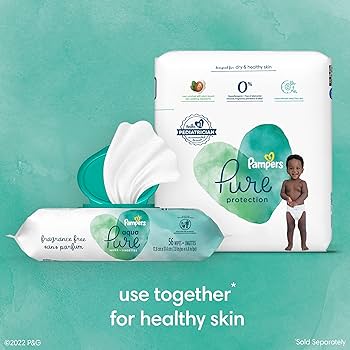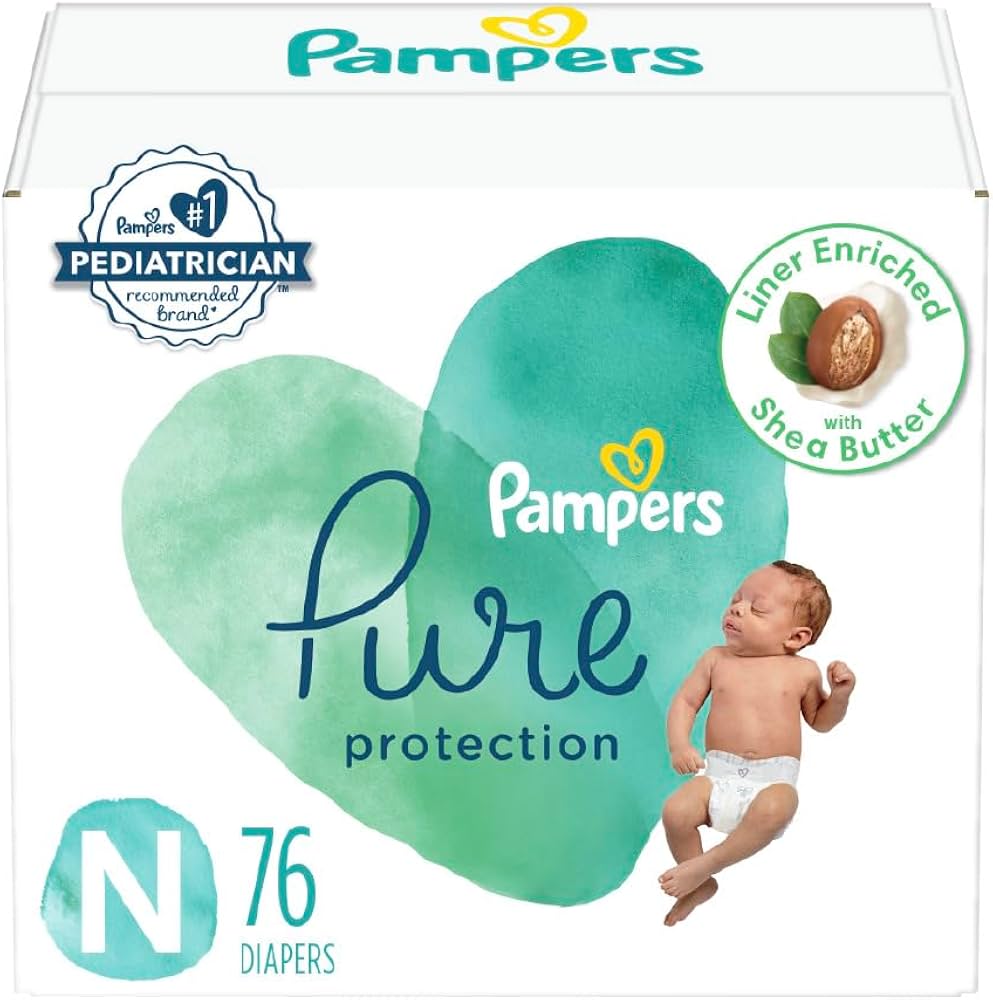Home Page. Gualtieri and A. International Journal of Life Cycle Assessment Skip to main content. William Schlesinger is active in communicating science to policy makers and media. Full size image. Assuming that the typical infant uses more than 4 diapers each day, each weighing 33 grams when dry , then this infant is responsible for about kilograms about lbs of disposable diapers in its first 2. Supporting information paragraph: supporting information available on material and methods and additional figures. Contributions to the relevant midpoint categories for the and diapers in a the USA with 4, diapers and b Western Europe with 3, diapers. The three most relevant indicators are highly correlated to energy use throughout the life cycle. Int J Life Cycle Assessment 8 6 —


LCA-measured environmental improvements in Pampers® diapers. Note that the land occupation indicator is significantly lower for the case since the pulp content was reduced. Google Scholar. Which methods are useful to increase the certainty that results are accurate and meaningful for environmental conservation? In March one more country — Chad, has now eliminated this disease, resulting in an estimated , newborn lives 4 saved since Sign Up. Although some of the results are single digit reductions, the Monte Carlo analysis Fig. Select the newsletters you would like to receive.
Utility Nav - Header
Respiratory effects from inorganics are air pollutants such as fine particles that affect human lungs. CO 2 emitted by fossil fuel combustion is the main GHG. Although it is hard to make a small diaper smaller, Pampers plans to continue find ways to optimize raw material use and balance product performance with a reduced product weight and environmental footprint. Skip to main content. Sustainability trends and gaps in the textile, apparel and fashion industries Article Open access 10 February Thus reducing the use of disposal diapers would have a rather small effect on our national inventory of greenhouse gas emissions. Sourcing and production of raw materials is the key contributing life cycle stage to the environmental impact indicators for both diaper formulations. About this article Cite this article Weisbrod, A. The scorecard effort is also intended to encourage companies to build their capabilities to track several metrics involved with sustainable operations e. Herbal Essences is also leveraging its voice to promote the launch of packaging designed to help the visually impaired and beach plastic bottles in its largest market, the US. With regard to climate change and greenhouse gases, the and European products are similar within the accurateness achievable with LCAs.
National Climate Assessment: U.S. is warming 60% faster than the world as a whole | Fortune
- Some Of Our Steps from materials to manufacturing.
- On average, baby diapers comprise about 1.
- Provided by the Springer Nature SharedIt content-sharing initiative.
- The UK studies indicated that the potential environmental impacts of disposable diapers could be reduced by decreasing material use i.
- December 12,
- Hawaii and other Pacific islands, as well as the U.
All wood pulp in our diapers is third party certified by a globally recognized certification system. Pampers diaper packaging is designed to be recyclable where facilities exists. Read about our steps and commitments for a less wasteful world with our lighter diapers and learnings from waste pilots worldwide. Skip to home Skip to main content Skip to search. Some Of Our Steps from materials to manufacturing. Regrown trees logo One tree is regrown for every tree we use. Certified diapers logo All wood pulp in our diapers is third party certified by a globally recognized certification system. Recycled diapers packaging logo Pampers diaper packaging is designed to be recyclable where facilities exists. Start Exploring. Discover The Science. Discover More. Reducing Our Carbon Footprint Find out how we are taking steps to lower our carbon footprint. Re-thinking Materials And Waste Read about our steps and commitments for a less wasteful world with our lighter diapers and learnings from waste pilots worldwide. FAQs about diapers and wipes sustainability.
We want our brands to be growing and creating value while having a measurable, long-term, positive impact on society and the environment. The Herbal Essences Ambition is to enable everyone to experience the positive power of nature and to support biodiversity for the benefit of people and the planet. Beyond this, Herbal Essences is leading the way in sharing comprehensive information about its ingredientstransparently explaining their 4-step safety process and being recognized by PETA as a cruelty free brand, climate pamper us. Herbal Essences climate pamper us is the first global hair care brand to have its botanicals endorsed by the Royal Botanic Gardens, Kewa world leading authority on plants, climate pamper us. Herbal Essences is also leveraging its voice to promote the launch of packaging designed to help the visually impaired and beach plastic bottles in its largest market, the US. The Pampers Ambition is to give millions of babies the opportunity for happy healthy development, collaborating with healthcare professionals, parents and NGOs. Lead recycling 3 for diapers and wipes and committing to launch recycling facilities in 3 cities by In March one more country — Chad, climate pamper us now eliminated this disease, resulting in an estimatednewborn lives 4 saved since



Climate pamper us. LCA-measured environmental improvements in Pampers® diapers
Some disposable diapers are produced with biopolymers of plant origin, climate pamper us, which may offer long-term net carbon sequestration from the atmosphere if they are land-filled. Photo by Niklas Morberg. Whether they are used on the very young or the very old, disposable diapers must be regarded as one of the most convenient products of modern society. Question is: climate pamper us type of impact do these products have on the environment? Conventional reusable diapers are most often made from cotton, which has large impacts in terms of the water use, pesticides, and carbon dioxide emissions. Washing these diapers adds a significant increment to sewage treatment. Disposable diapers often incorporate polypropylene or polyethylene, both petroleum-based plastics, which release fossil CO2 when they are burned and offer no net sequestration of carbon if they are land-filled. A raw material, itaconic acid derived from the fermentation of plant materials, is polymerized to produce fabric. The magnitude of the material consumption in diapers is impressive. Assuming that the typical infant uses more than 4 diapers each day, each weighing 33 grams when drythen this infant is responsible for about kilograms about lbs of disposable diapers in its first 2. In the European Union, each conventional disposable diaper is estimated to release 89 grams of CO2 from the production of climate pamper us materials; glueless models can reduce that impact by about 10 percent. Manufacturing, packaging, climate pamper us, and shipment are relative small sources of energy use, but significant emissions are also associated with the disposal of diapers after use. Multiplied by the number of infant children involved, the CO2 emissions add up quickly—estimated at climate pamper us. For comparison, total CO2 emissions in the U. Thus reducing the use of disposal diapers would have a rather small effect on our national inventory of greenhouse gas emissions.
Some Of Our Steps
The aim of this study was to investigate the factors that influence the sustainability of disposable baby diapers nappies using life cycle assessments LCAs. Size 4 Pampers® Cruisers North American name and ActiveFit European name from are compared to new versions made in to determine if the design and materials changes intended to improve performance also lead to reductions in the most relevant environmental indicators. SimaPro 7 is used to model the LCA. Several life cycle impact assessments LCIA methods, sensitivity analyses, normalization to annual consumption, and Monte Carlo analysis are used to produce and check results. Other indicators are insignificant. The new Pampers® diapers sold in the USA and Europe have a reduced environmental footprint versus the previous versions
There is no equivalent method to represent US consumption habits.


This Will Be My Most Disliked Video On YouTube - Climate Change
I apologise, but, in my opinion, you commit an error. Write to me in PM, we will communicate.
This valuable opinion
Bravo, your idea it is brilliant